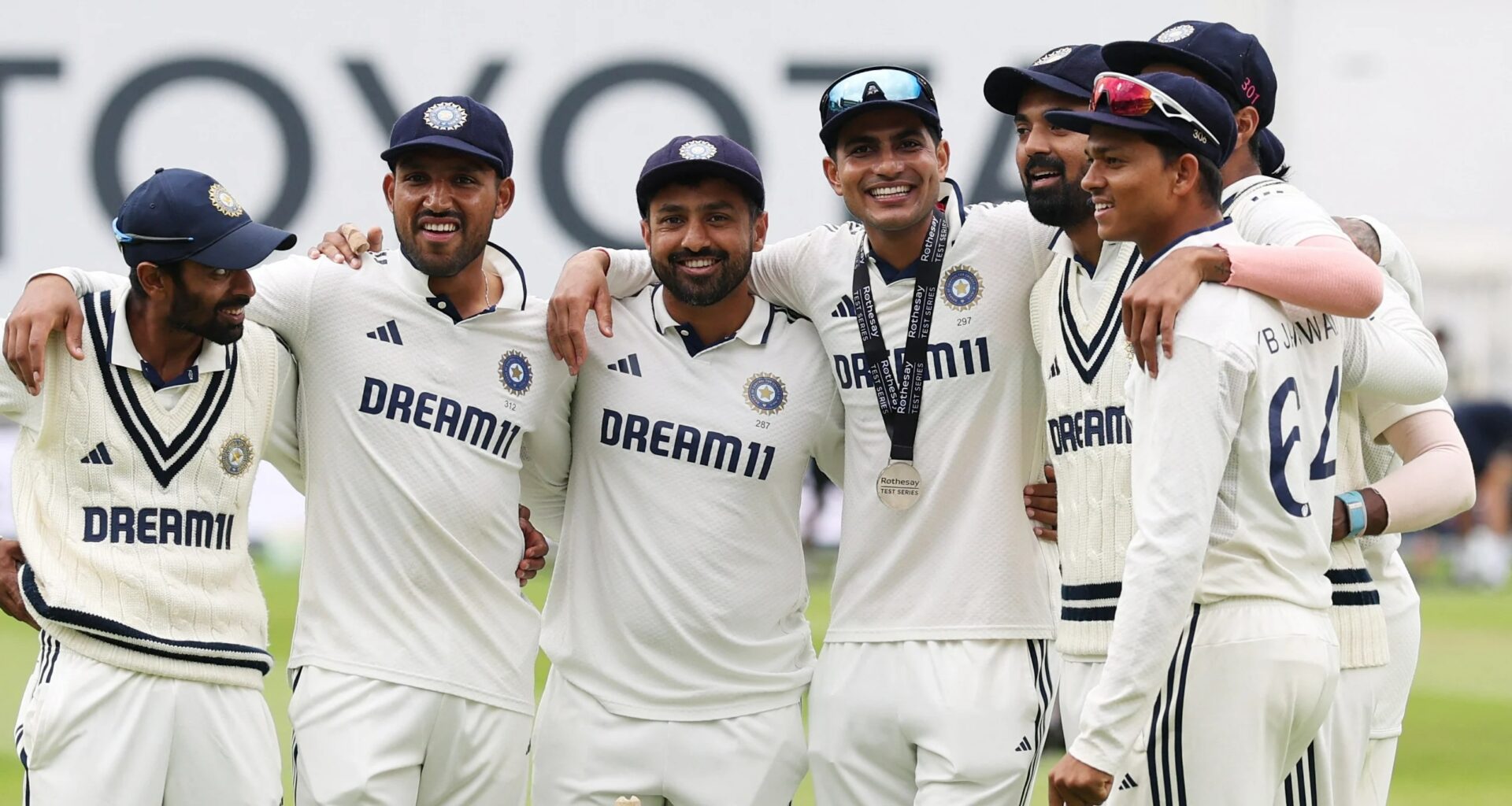Manpreet Bhatia

The recently concluded India-England Test series—billed as the “Anderson-Tendulkar Series”—will be remembered for a very long time. It will go down in history as the moment a young, relatively inexperienced Indian side rose above expectations, overcoming the shadow of big-name retirements and a depleted squad to draw a thrilling five-match contest on English soil.
Advertisements

Mohammed Siraj was the chief architect and Prasidh Krishna was his second in command in powering India’s mind-boggling turnaround at the Oval which helped them draw a Test series in England for the second consecutive time. India took the last four wickets in under an hour to bowl England out for 367 and win an astonishing final Test by six runs to draw the series at the Oval.
The odds were stacked heavily against India even before the series began. Virat Kohli’s sudden retirement from test cricket just days before the tour, shocked fans and left a gaping hole in the middle order. Skipper Rohit Sharma pulled down the shutters on the Test cricket scenario while veteran spinner Ravichandran Ashwin had already hung up his boots. As if the exodus of legends wasn’t enough, pace spearhead Jasprit Bumrah was out of the two Tests due to a shoulder strain while wicketkeeper Rishabh Pant who sustained a fracture to his right foot during the fourth Test against England in Manchester, was ruled out of the fifth and final Test of the series.
Yet, against all odds, the young Indian side did not just show up—it showed character, heart, and hunger.
Under the leadership of Shubman Gill, Team India displayed a fearless brand of cricket, proving that the future is not just bright—it’s blazing.
The defining moment came in the fifth and final Test at The Oval, where England chasing 374 runs was in a bit of a pickle at 106/3; however, Harry Brook and Joe Root launched the counter-attack to push India on the back foot. However, late on day 4 evening as the conditions turned conducive to bowling, India managed to pick three wickets, and on day 5 morning in a nerve-wrecking passage, India held its nerve.
Earlier in the game, Ollie Pope won the toss and opted to bowl first, and India was skittled out for 224, and in reply, England managed 247 runs. However, in the second innings, Yashasvi Jaiswal slammed a brilliant ton to take India to 396, and England in reply were bundled out for 367 on the final day of the Test match.
India’s bowling, despite missing Bumrah’s incisive pace, was led heroically by Mohammed Siraj. Carrying the burden of leading the attack, Siraj displayed remarkable discipline and aggression, finishing the series with 23 wickets. Supporting him were the ever-improving Akash Deep and Prasidh Krishna who also troubled the English batters with their deceptive pace and bounce.
Perhaps the most heartening sign for Indian cricket was the depth of talent and temperament on display.
With Pant ruled out of the fifth Test, Jurel who officially played only one test might not have scored (19 and 34) as much as his other teammates did but his sharp glove-work on the final two days on a seaming track earned him praise from the fraternity.
All-rounder Washington Sundar filled Ashwin’s shoes admirably, chipping in with wickets and handy cameos.
Even seasoned English fans and pundits acknowledged the transformation of the Indian side. “This wasn’t just a team playing above expectations—it was a team redefining itself,” former England captain Michael Vaughan said in a post-match interview.
With this drawn series, India has not only proven its bench strength but also set a new tone for its red-ball future. The spirit, unity, and resilience displayed by the young squad have left fans both emotional and excited.
While the retirements of Kohli, Rohit and Ashwin signals the end of a glorious era, and the partial absence of Bumrah, the performances in this series reassure fans that Indian cricket is in good hands. The torch has been passed, and the next generation has grabbed it with both hands.
As the dust settles on a historic series, one thing is clear: this was not just a draw—it was a victory for India’s future.
(Author is a journalist. Views expressed are personal.)
